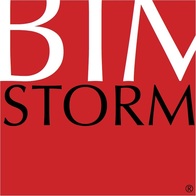|
DATA ON YOUR OWN DEVICE: When Data Checks In, But Can Never Leave The Mirage of Interoperability In the evolving landscape of digital twins and smart cities, a critical issue often lurks beneath the surface: the illusion of interoperability. "A lot of vendors are presenting their systems as interoperable when, in fact, they're not. They're only interoperable within their own ecosystem." Amir Hirsch made this statement in the thought-provoking podcast on Smart City Networks, succinctly capturing a widespread challenge in our journey towards truly smart cities. In other words, they are closed. Just Prisoners in the Hotel: The Lock-In Dilemma It's a common scenario: a vendor promises a solution that seems to play well with others, but in reality, it's designed to keep you within their ecosystem – a digital version of 'Hotel California' where we are all just prisoners here of our own device. This proprietary approach stifles innovation and burdens cities with systems that can't adapt to changing needs or integrate new, more efficient technologies. Digital Twins: Beyond Pipes and Pumps My work focuses on BIM and digital twins as replicas of physical assets and as complex systems encompassing tangible and intangible elements. Take, for example, a city's water system. It's not just about pipes and pumps; it's also about regulations, usage patterns, and environmental impact. Digital twins must allow these multifaceted aspects to enhance decision-making and asset management. Governance for Open Solutions Cities and owners hold significant power in their procurement decisions. Demand real interoperability and open standards and make these non-negotiable parts of contracts with vendors. Cities can steer the market towards more open, adaptable solutions. It's about setting the rules of the game in favor of long-term flexibility and public good. BIM and Digital Twins at NIBS As part of the BIM and Digital Twins subcommittee for the National Institute of Building Sciences, I'm involved in crafting a position paper that delves deeper into these issues. This upcoming paper aims to provide actionable insights and guidelines to navigate the complexities of digital twins in smart city environments. Be on the lookout for this draft this Spring 2024. Past Insights to Present Realities In a recent post titled Building Hallucinations, we discussed the transformative yet challenging world of AI in the AECO industry. The journey from AI-induced 'hallucinations' to informed decisions mirrors our current need for interoperability in digital twins. Just as we recognized the need to navigate through the fog of misleading AI promises to reach informed, data-driven decisions, we now face a similar challenge in escaping the 'Hotel California' of proprietary systems. This pursuit of openness and clarity in AI and digital twins underscores our industry's commitment to innovation grounded in reality, not illusion. Breaking Free: The Imperative of True Interoperability Revisiting the initial quote, it's clear that true interoperability is more than a vendor's promise; it's a foundational requirement for sustainable, informed environments. For a deeper dive into these topics, I invite you to follow past and upcoming events at: Enjoy the music!Comments are closed.
|
BIMStorm
Thoughts on the "i" of BIM and more. Archives
January 2024
Categories |
Previous BIMStormsCalifornia
BIMin Microgrid Distance 2020 Assets 2019 AECNext 2019 AECNext 2018 Data Independence 2016 Healthcare 2015 Blog 2010 ~ 2013 © 2019 - BIMStorm®
|



 RSS Feed
RSS Feed